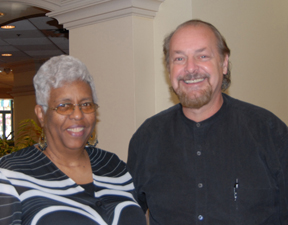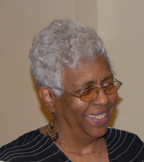

|
“Despite the fact that equipment and opportunities were disproportionate to those offered in white public schools, our teachers made a difference. We were molded and shaped into productive citizens who knew no limits to raising the bar to succeed in any endeavor. We did not know failure, but we did know all too well the painful road to success. Without the dedicated efforts, love, and support of our beloved teachers, where would we be?” |
||||||||
| Curator’s statement With great pride, the Museum of Education begins its two year-long Secondary School Study Exhibition by featuring Pearl High School of Nashville. My reasons for beginning with the Pearl School are both historical as well as sentimental. In many respects, the Secondary School Study officially began in Nashville at the Fisk Conference, staged on April 24-27, 1940, where participating schools’ principals met with college presidents, deans, and faculty, state agents, and General Education Board staff members for the “public presentation” of the project. In 1943, the Secondary School Study project again returned to Nashville to begin the second phase of the program with the Pearl High School Conference. By this time the spirit of the project—“democratic procedures and cooperative effort”—had been defined, and attention turned toward expanding experimental practices with other contact schools throughout the Southeast. While all seventeen member schools were distinguished in their own way, Pearl High School seemed to serve as a starting point for the project and, for this reason, the site seemed to be a fitting beginning for the Museum of Education’s series of school vignettes. There is another reason, however, to begin with Pearl High School since the efforts of one of its alumni, Alice D. Epperson, have proven to be an inspiration to me and served to spark my interest in the Secondary School Study. In November 2002, while visiting Nashville to assist in an historical research project at Vanderbilt University, I met with Alice who was at that time engaged in efforts to establish a Pearl High School Museum. She had recently helped to organize the 2002 Mega Reunion of Pearl High School Alumni and previously had spearheaded efforts to place the Pearl building on the National Register of Historic Places. On that November afternoon, we laughed and chatted, and she taught me through her words and actions the power and legacy of the Pearl High School community. As she drove me to the site of the Pearl building, not then renamed as it is today, my excitement and interest in researching the Secondary School Study began. |
|||||||||
My enthusiasm, however, was also tempered by the realization that museum exhibits must display material culture, and I wondered if I could locate enough archival materials to be able to stage informative exhibitions. With years of experience as a curator I knew that high school documents rarely survive, especially those irreplaceable materials from our historic African-American schools. But Alice’s devotion to Pearl reminded me of a resource other than the traditional university and municipal archives. Many of the black high schools instilled a strong sense of community—active communities of alumni—who could describe activities and offer insights into past curricular programs that could never otherwise be reconstructed from archival documents. |
|||||||||
 |
|||||||||
| I decided that upon completion of my then ongoing Eight Year Study research project, I would begin archival and oral history research and acquisitions in order to prepare a series of exhibitions of these schools. With or without funding my resolve was strong; I knew I would initiate and complete a Secondary School Study research project. Drawing upon the methods of archival collage and biographical vignette, the schools would be presented by their teachers and students. Their voices would be heard as a montage rather than as my grand narrative. | |||||||||
Alice’s assistance was only to begin, however. Years later, as I prepared for my first school visit—to Nashville during the summer of 2007—I contacted her to inquire about any planned Pearl High School reunions. After describing my project, she said that I should come right away. With an alumni’s devotion to her beloved school and the organizational abilities of a curator, she contacted Pearl teachers and students from the 1940s and early 1950s and proceeded to organize a four day oral history tour for which she accompanied me to each setting. Perhaps I would have found the names and address of many of these teachers and students without her assistance and, no doubt, I could have conducted the interviews without her. But my conversations certainly would not have been as rich without Alice’s presence. I would have met individuals, but I may not have fully experienced Novella Bass’ precision of thought, Ella Thompson’s sheer joy and delight, Dorothy Gupton’s thoughtfulness, Lillian Thomas’s kindness, and Callisto Bell’s graciousness. Alice convinced me that I could embark upon a research journey with adventurous company and, with this first of seventeen exhibitions, I thank her for her patience, insight, and kindness. Craig Kridel |
|||||||||

an institutional member of the International Coalition of Sites of Conscience
Museumofed@gmail.com
